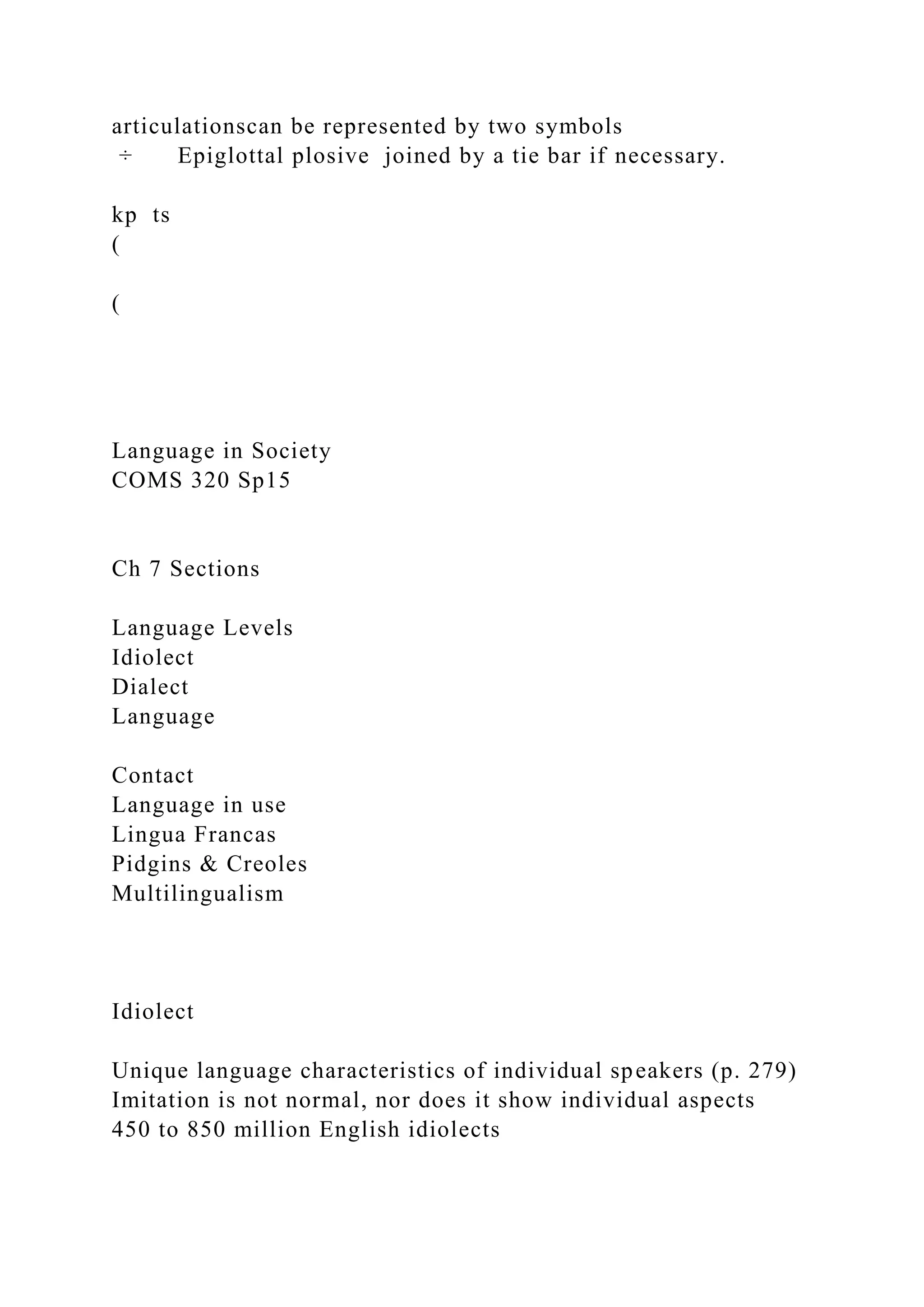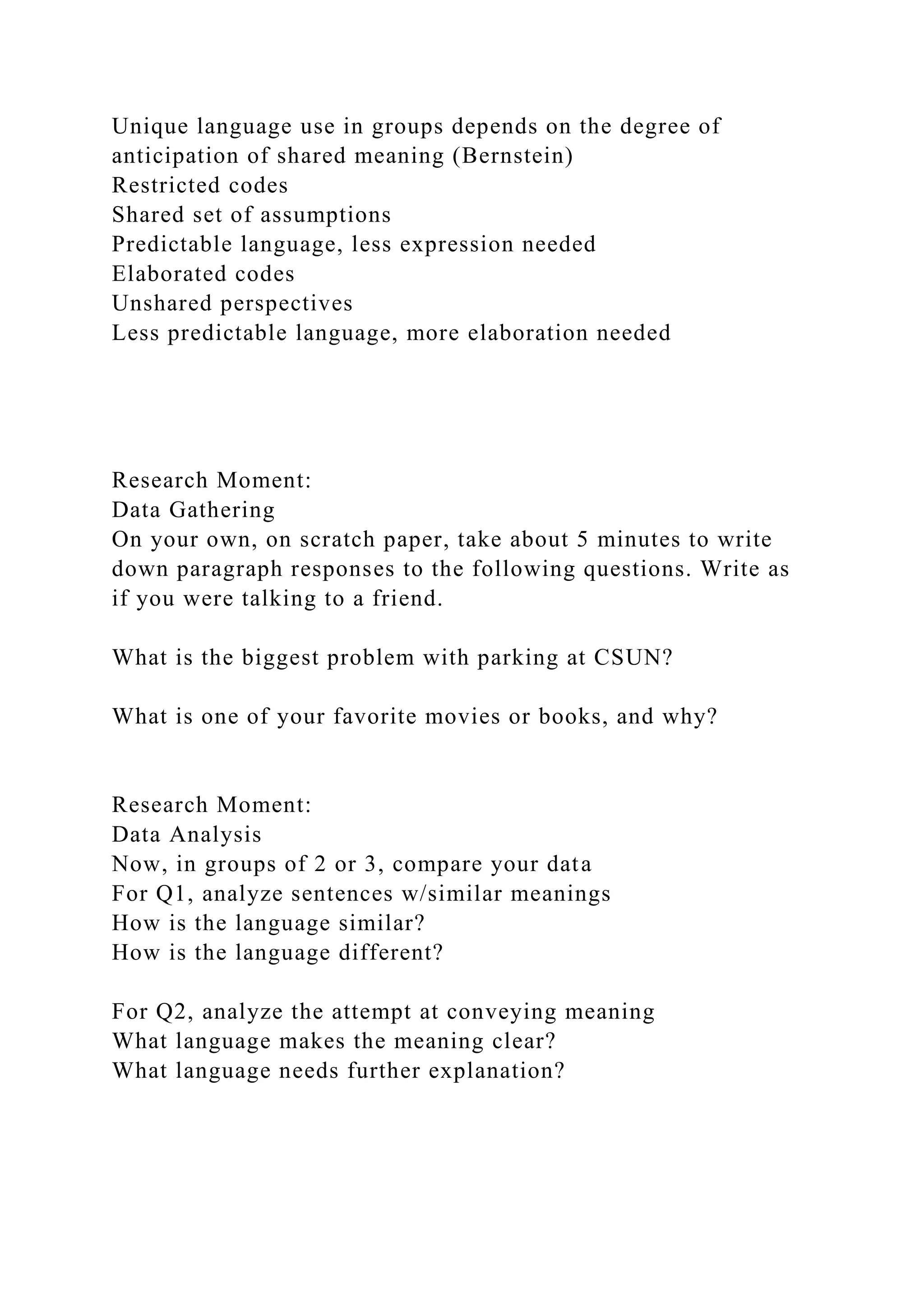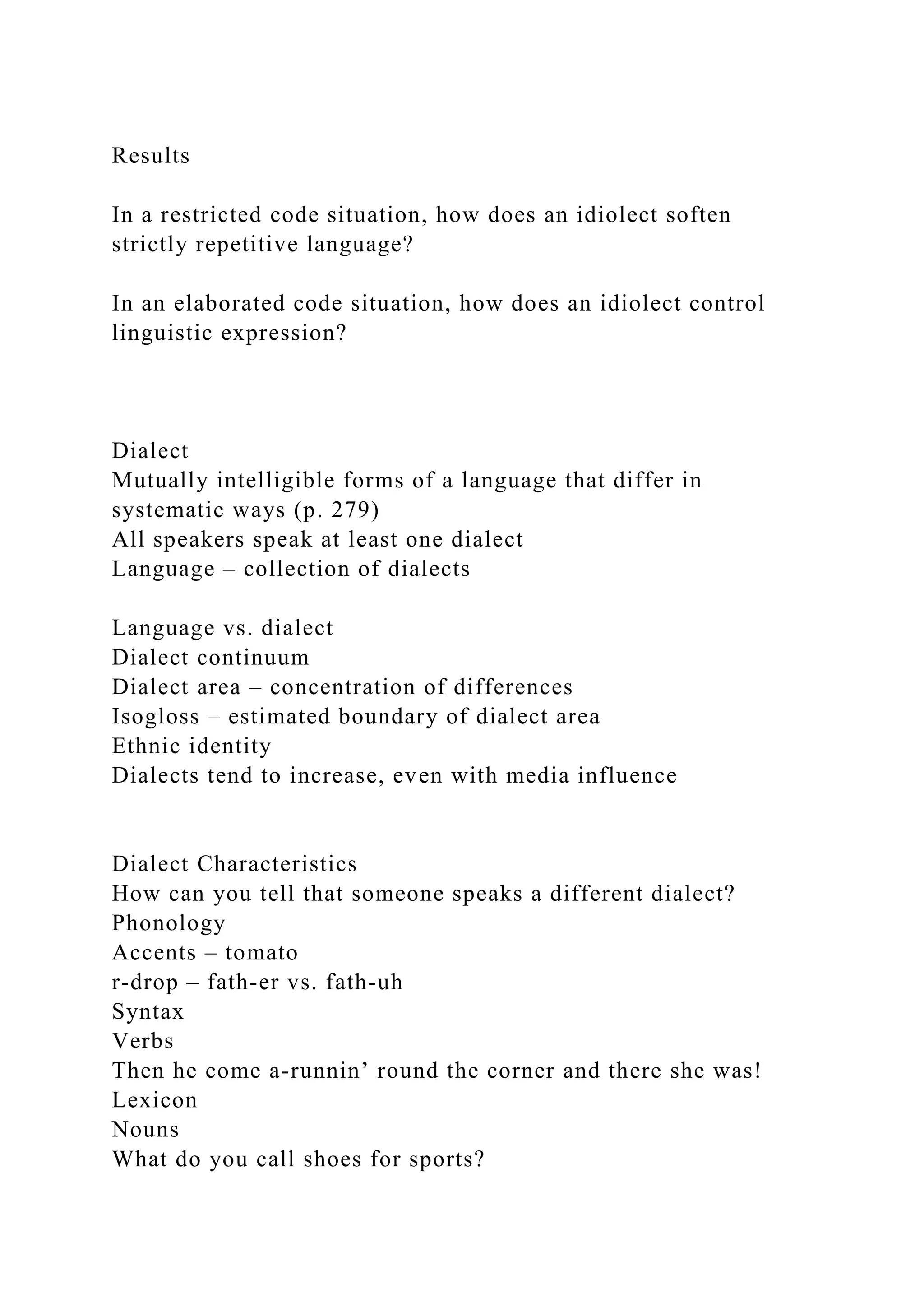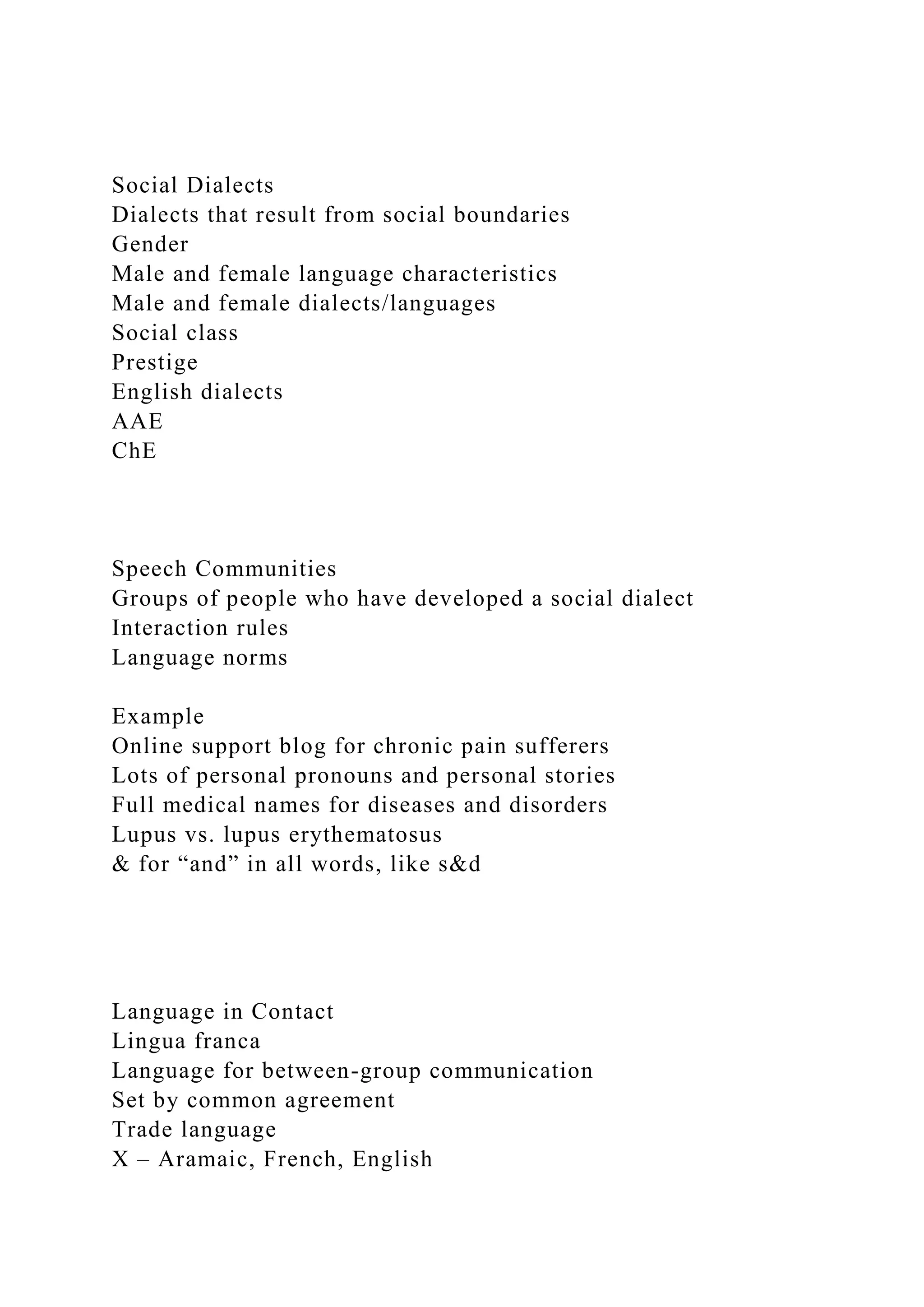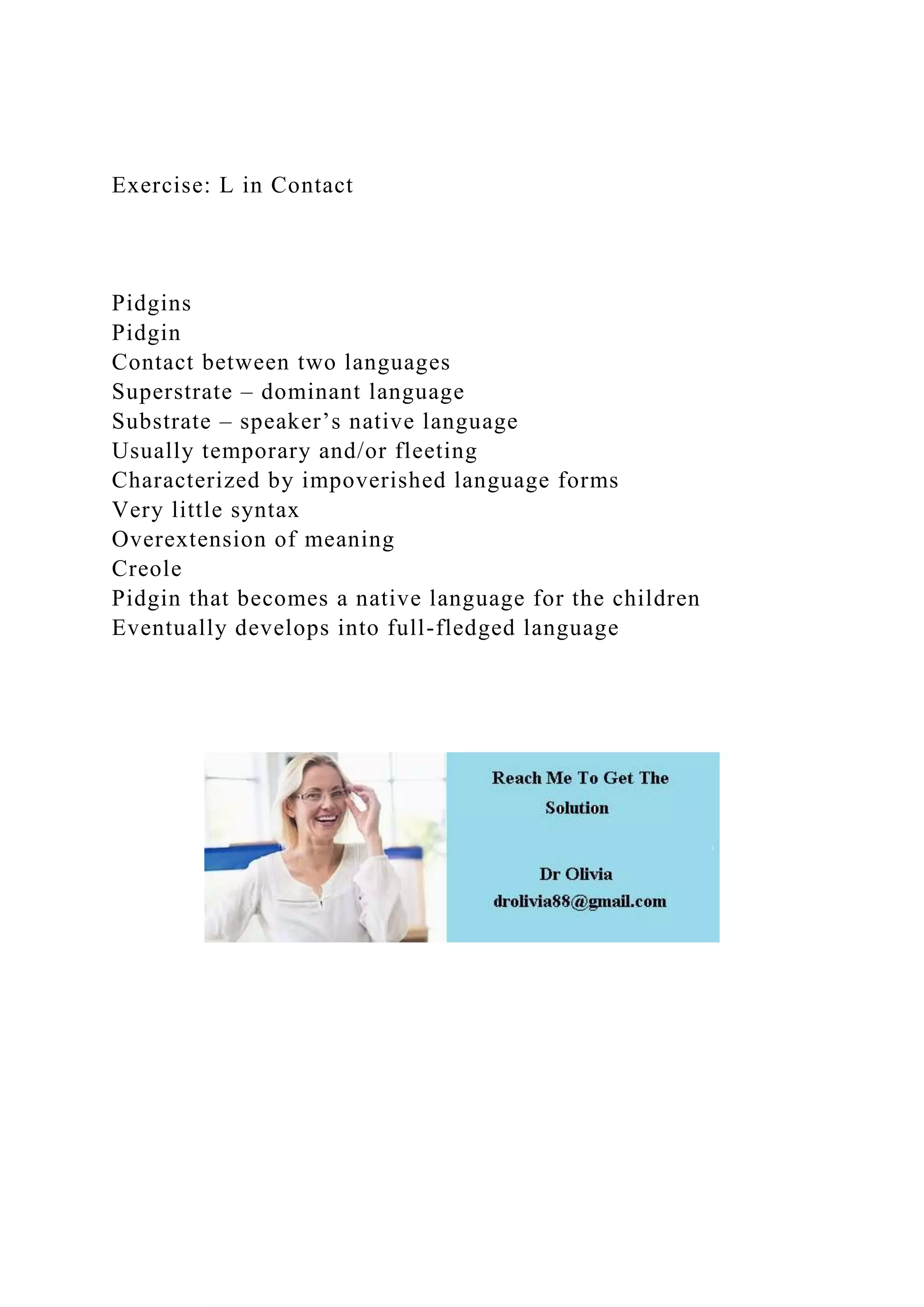The document discusses several topics related to language and communication:
1. It describes different types of writing systems including logographic, syllabic, consonantal, and alphabetic systems.
2. It explains how the development of written language can slow language change and motivate language preservation by allowing repetition with fewer individual changes.
3. It discusses how writing influenced early Greek society by allowing for manipulation of concepts, lessening of human interaction, and distancing language from self through the permanent written word.
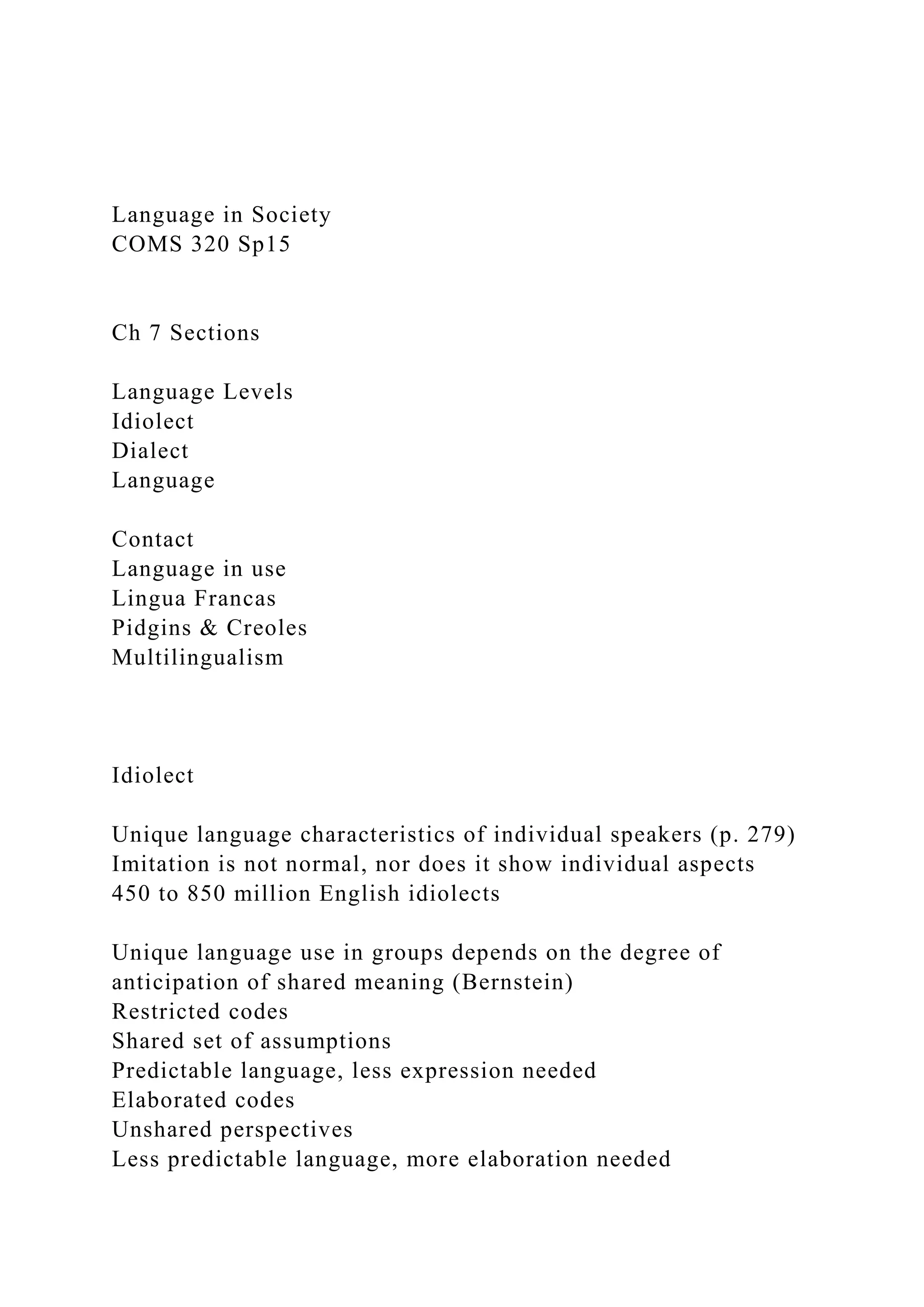
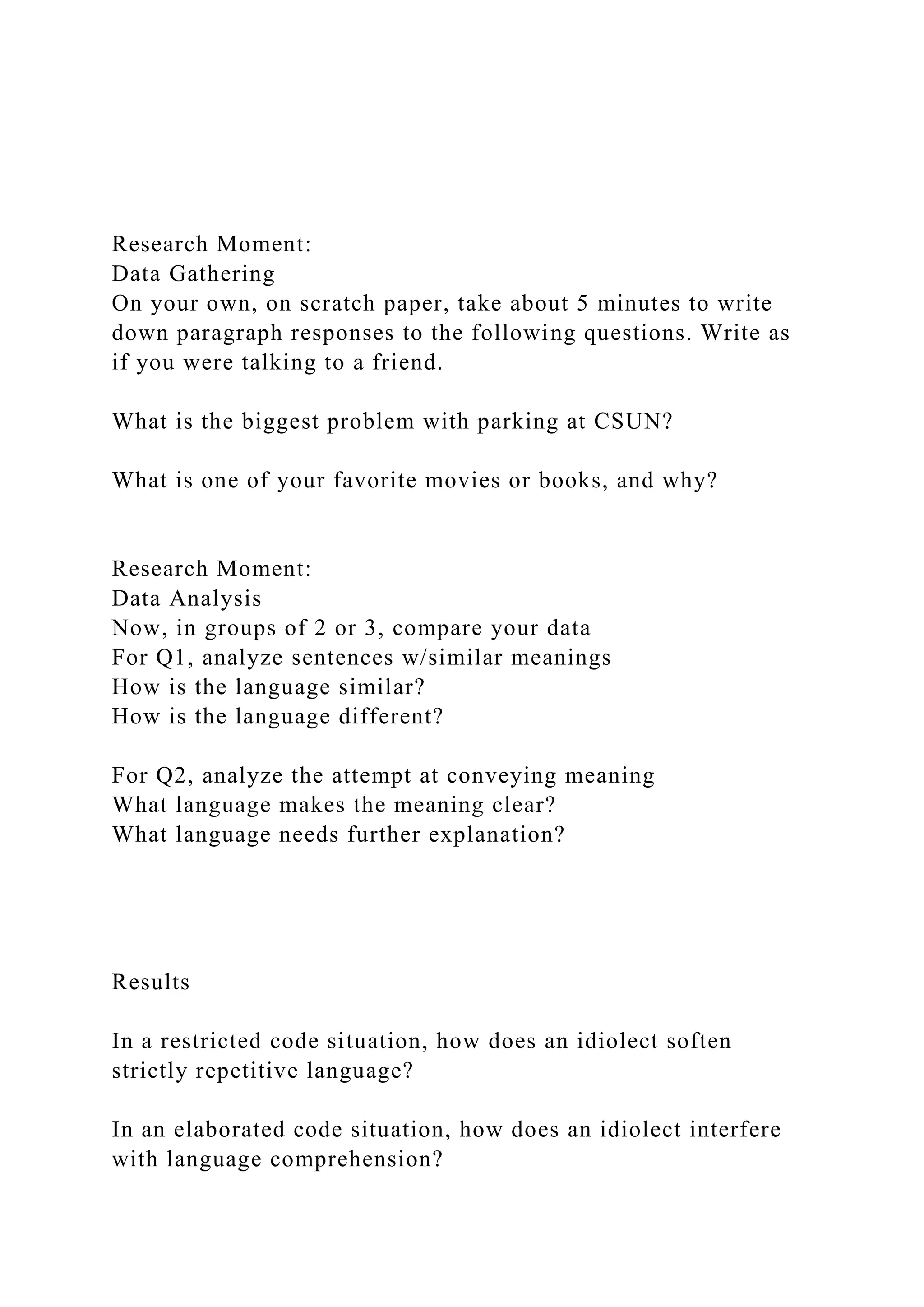
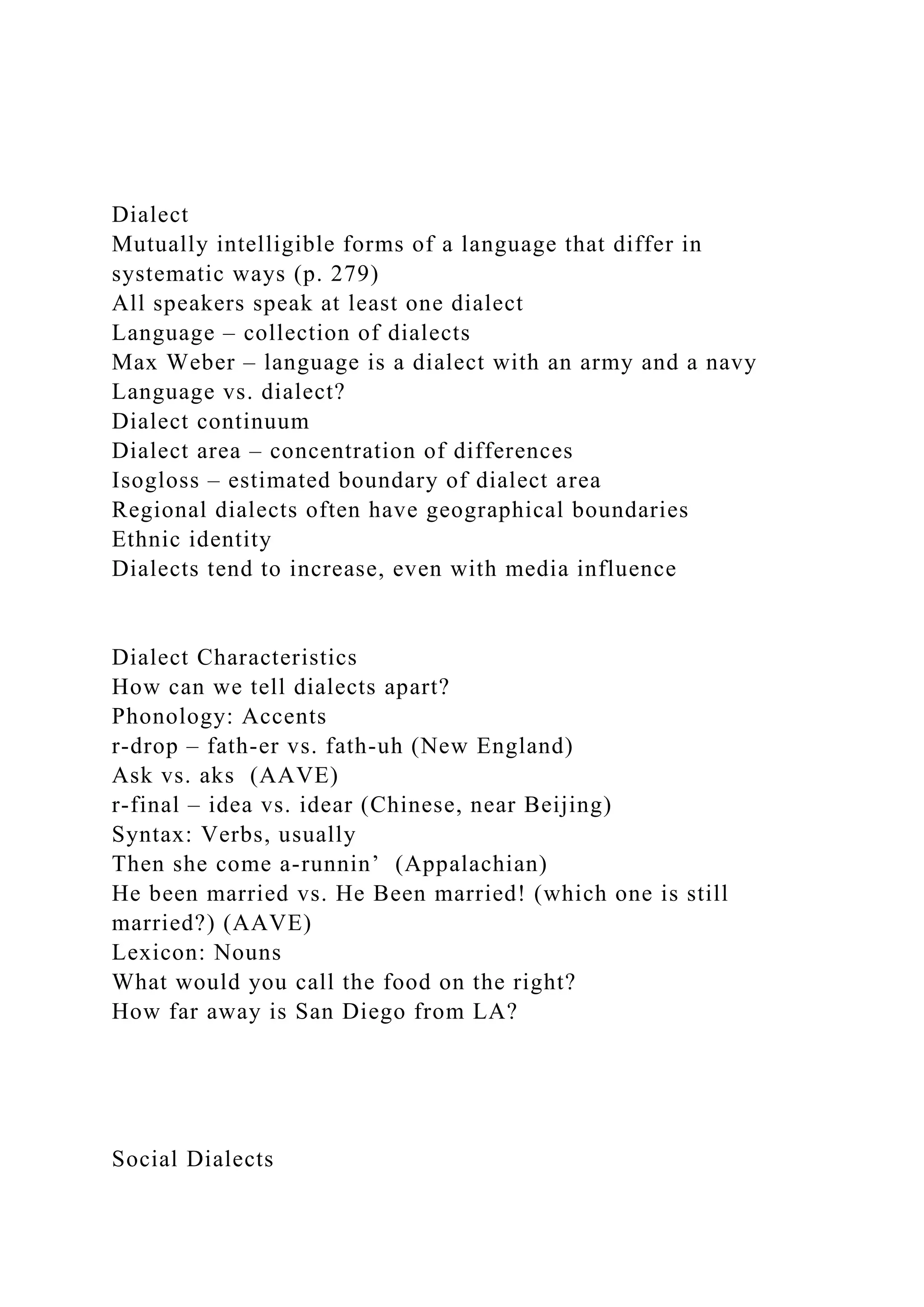
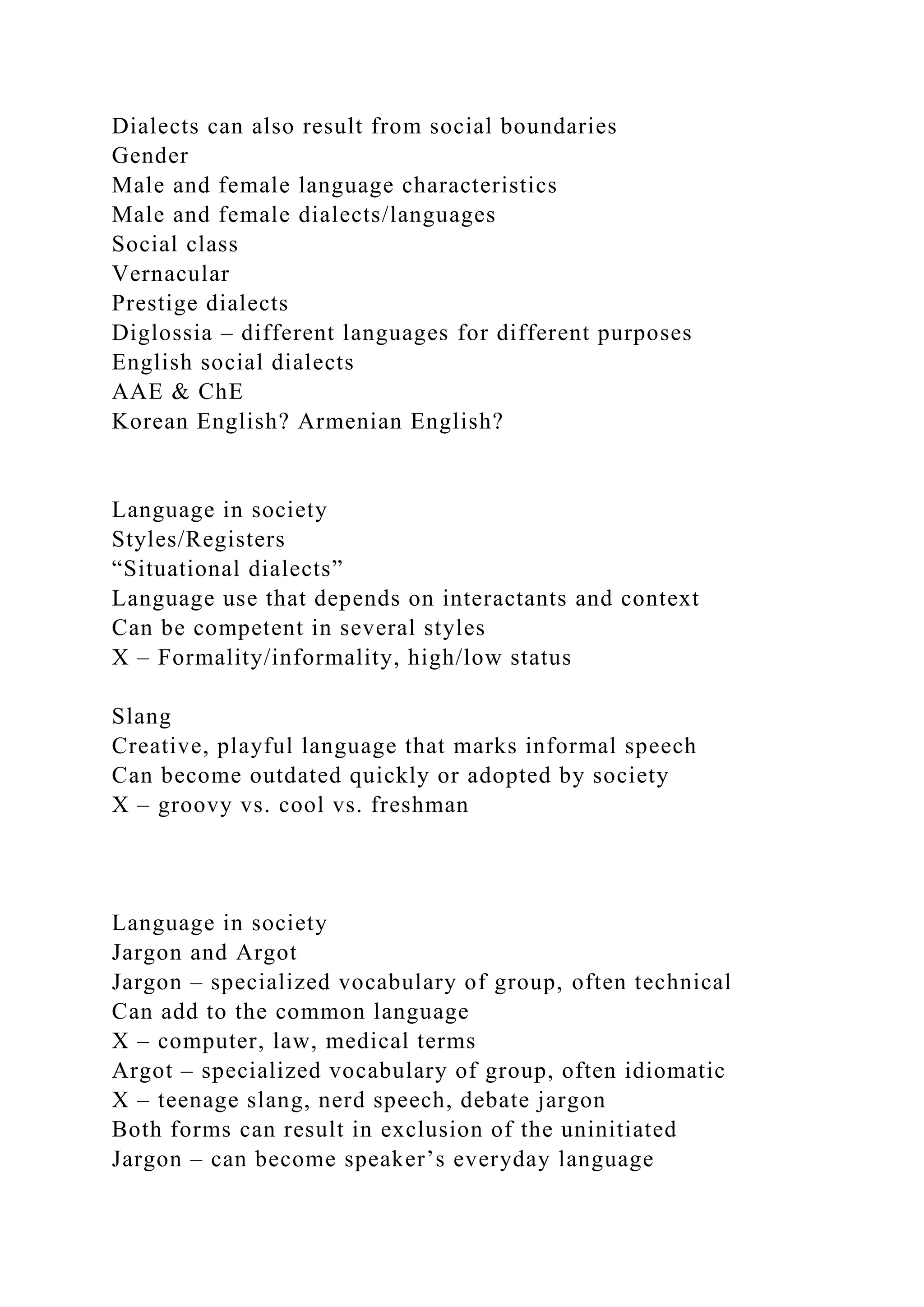
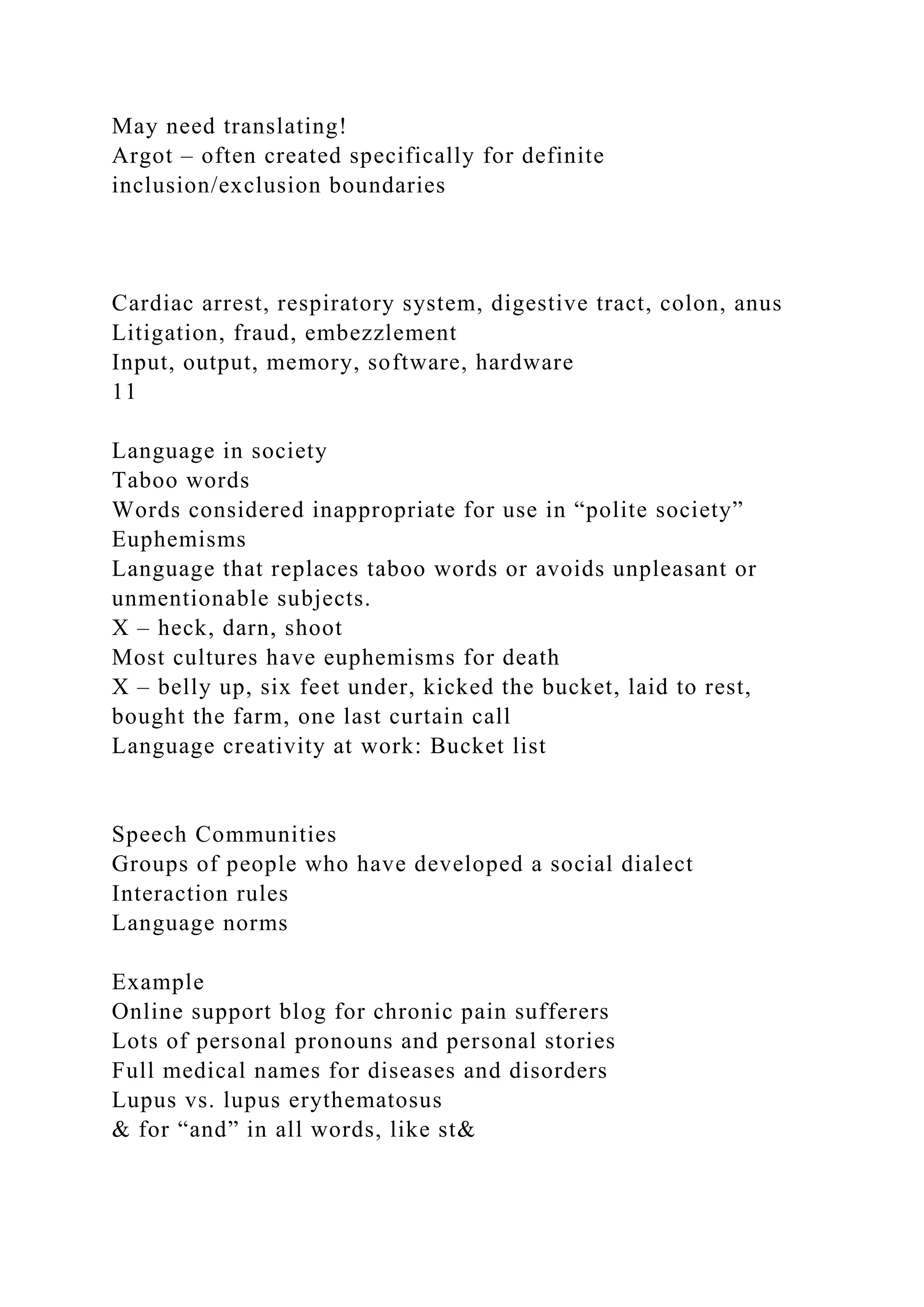
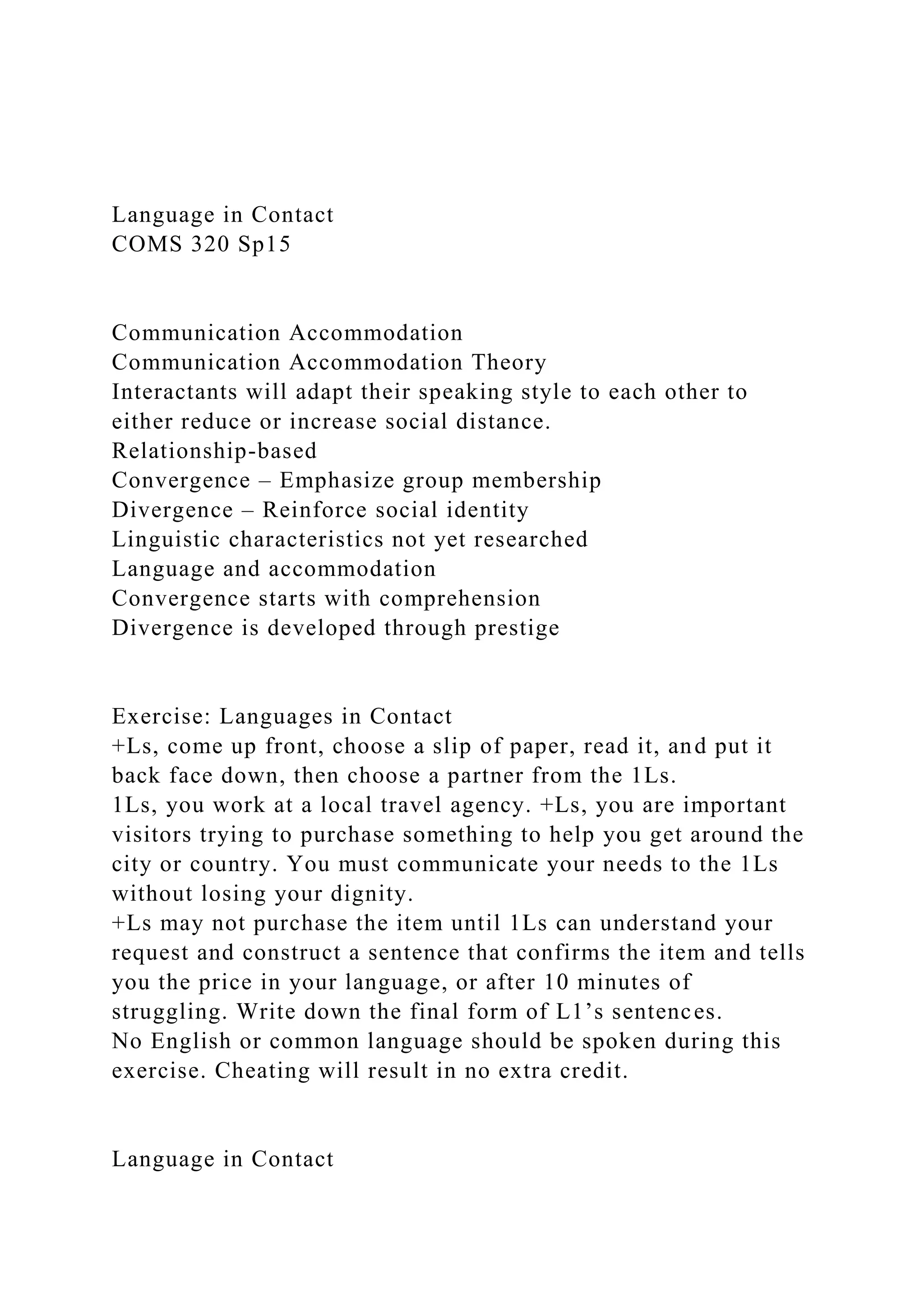
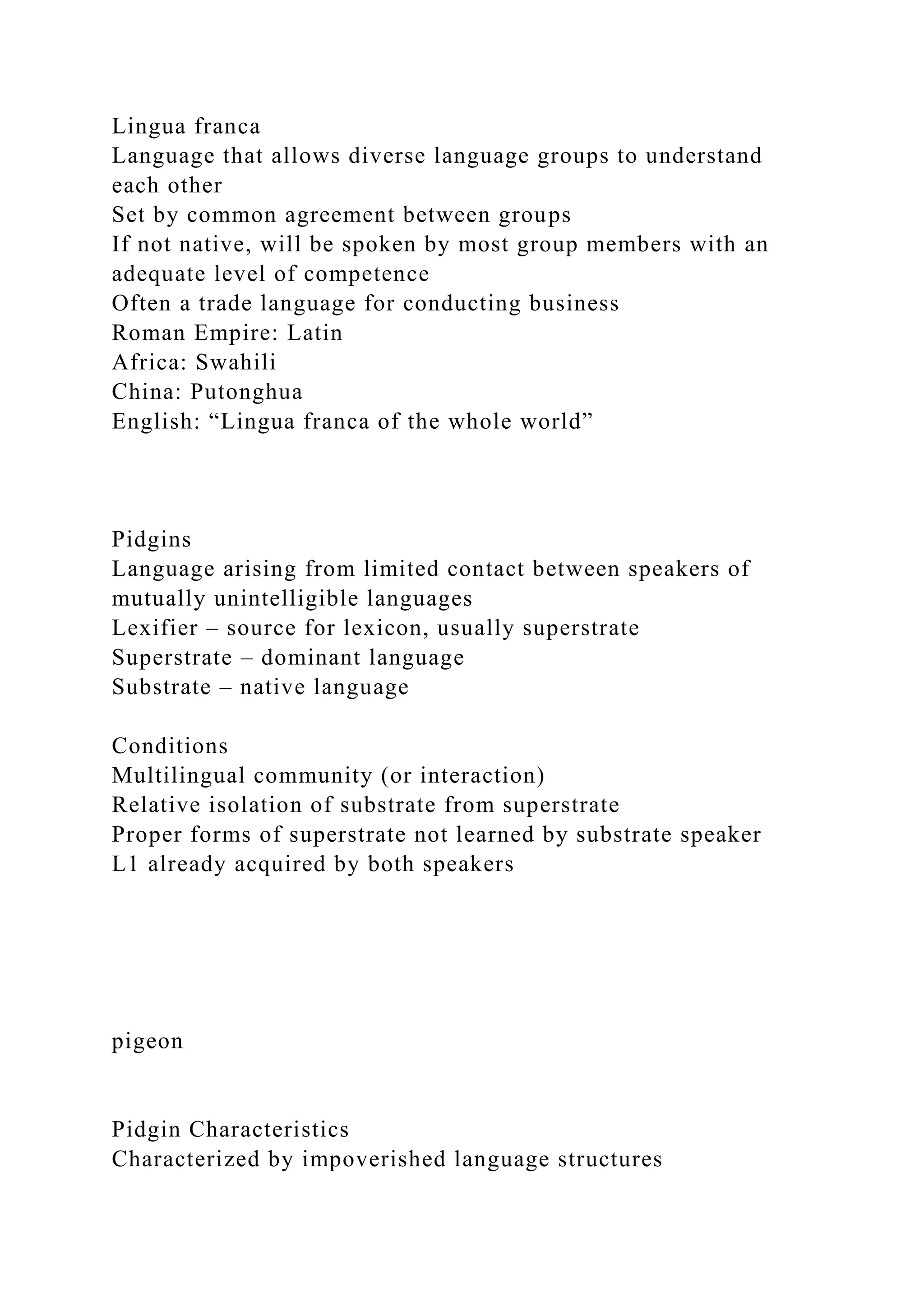

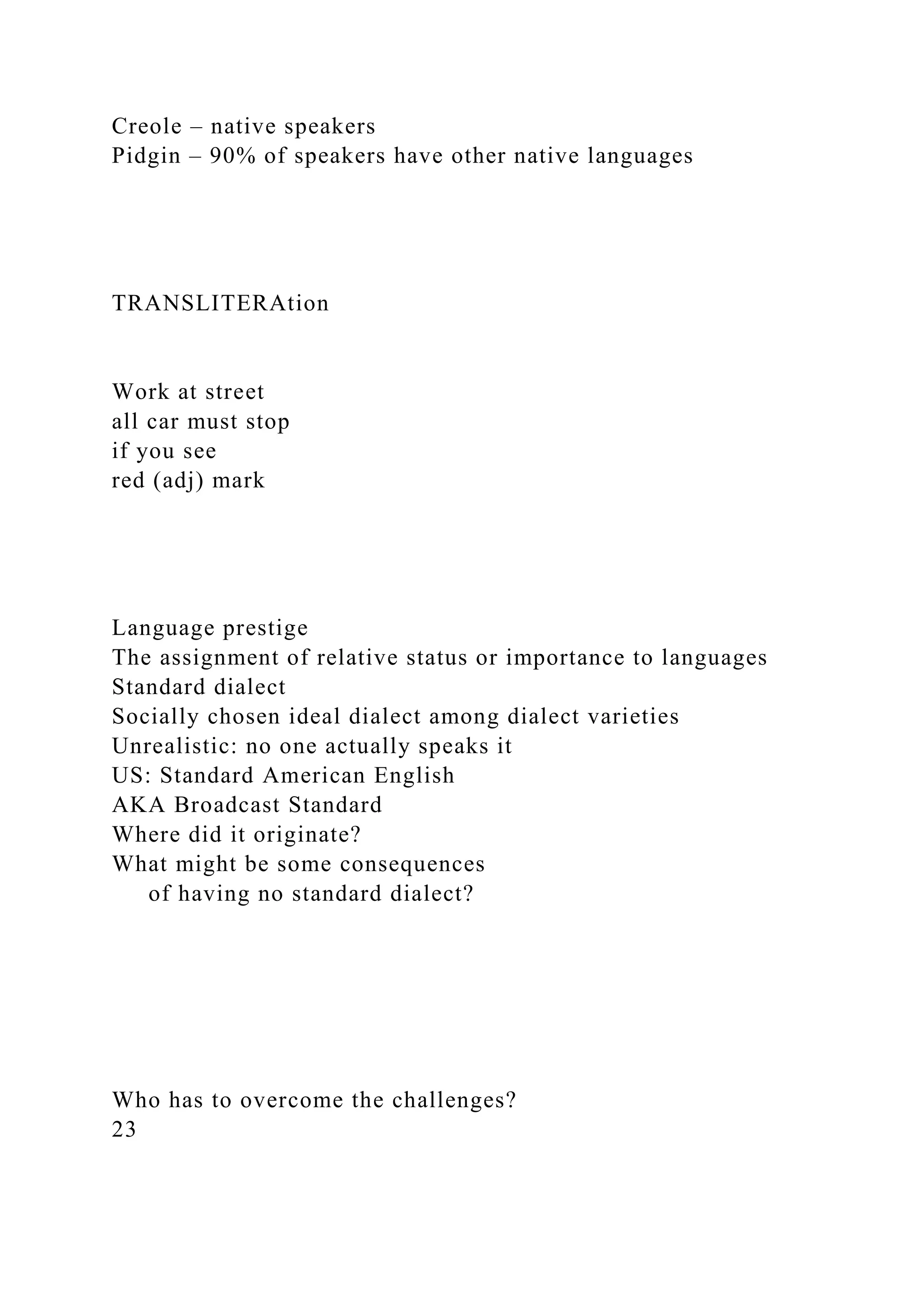
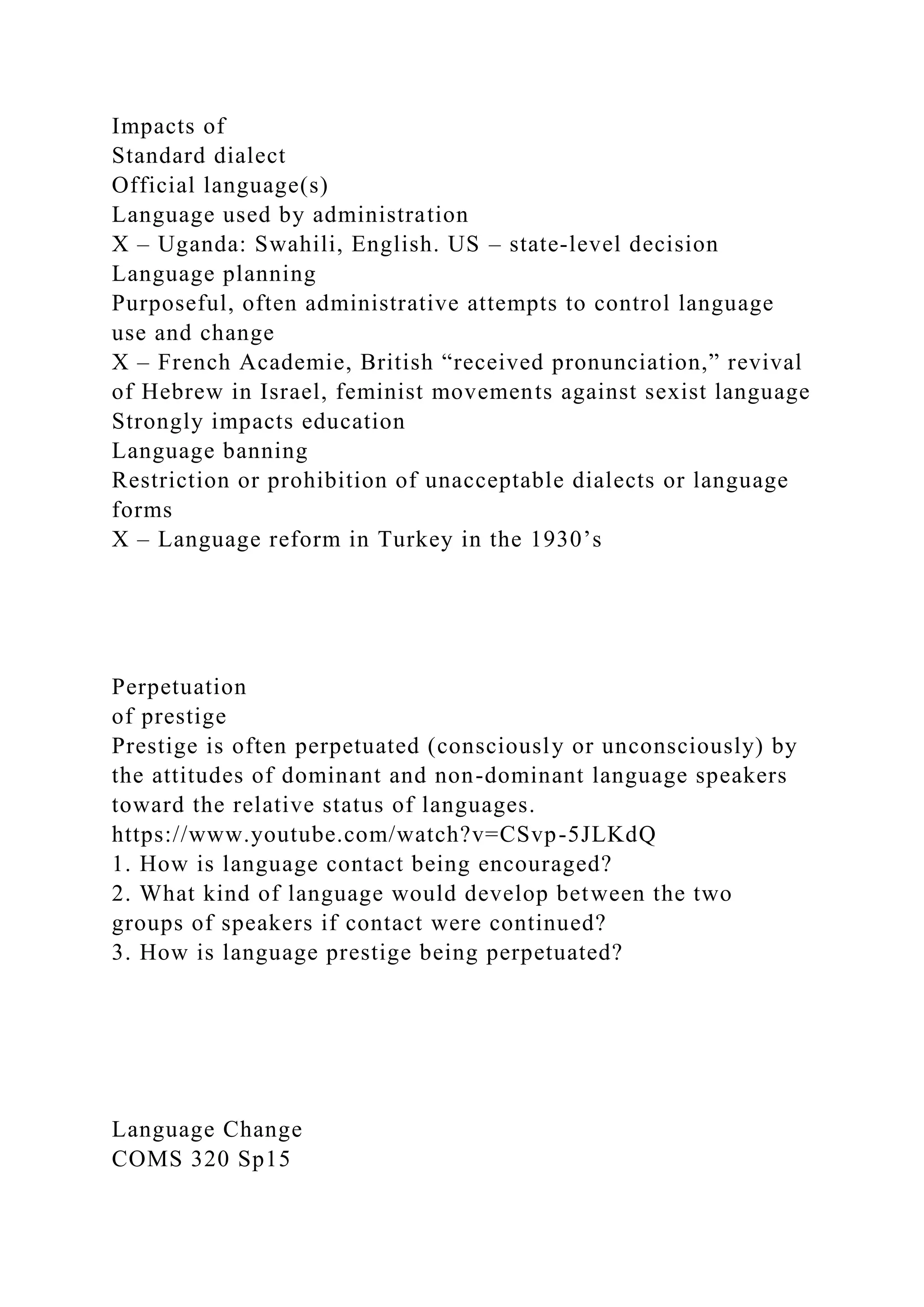
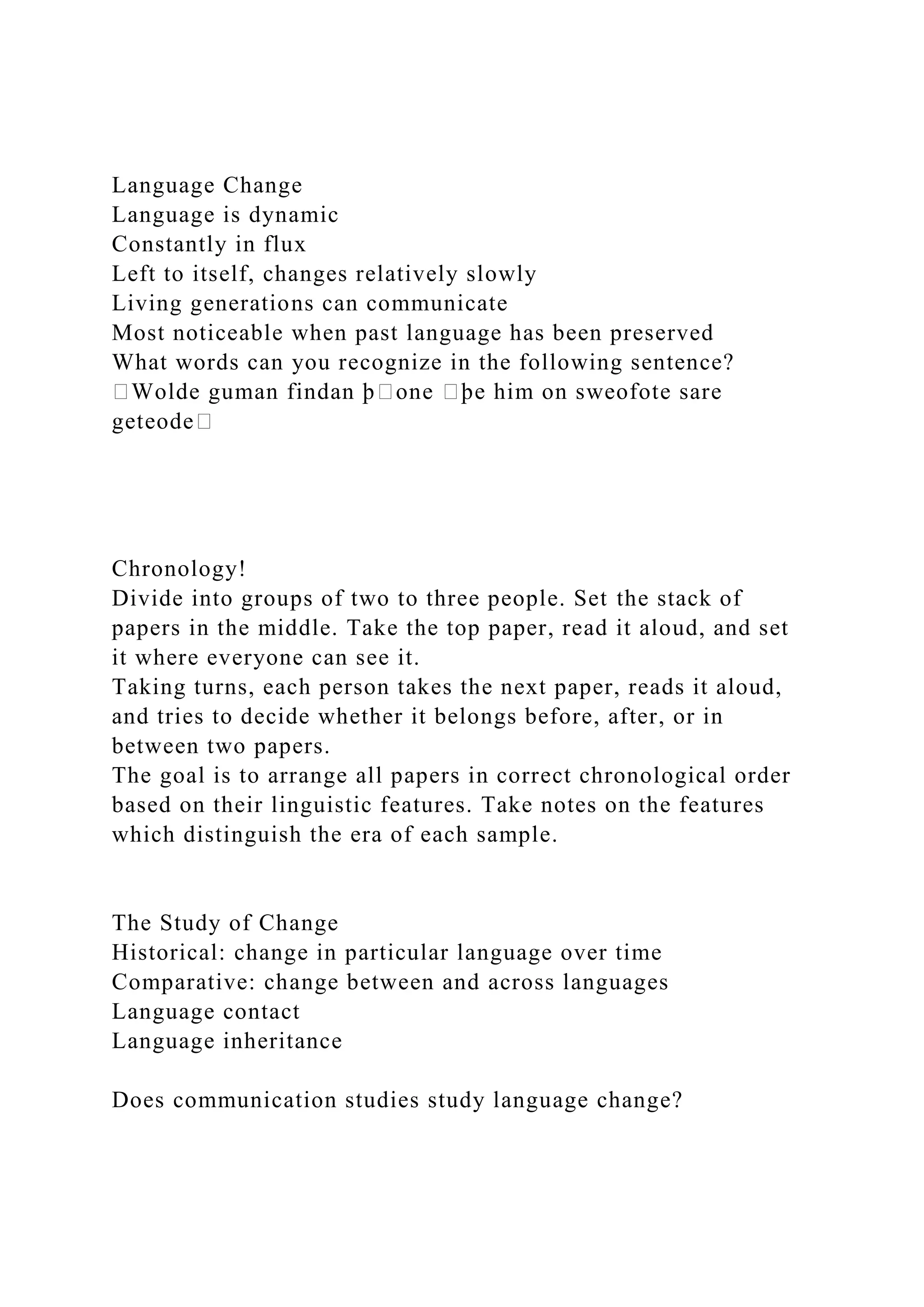
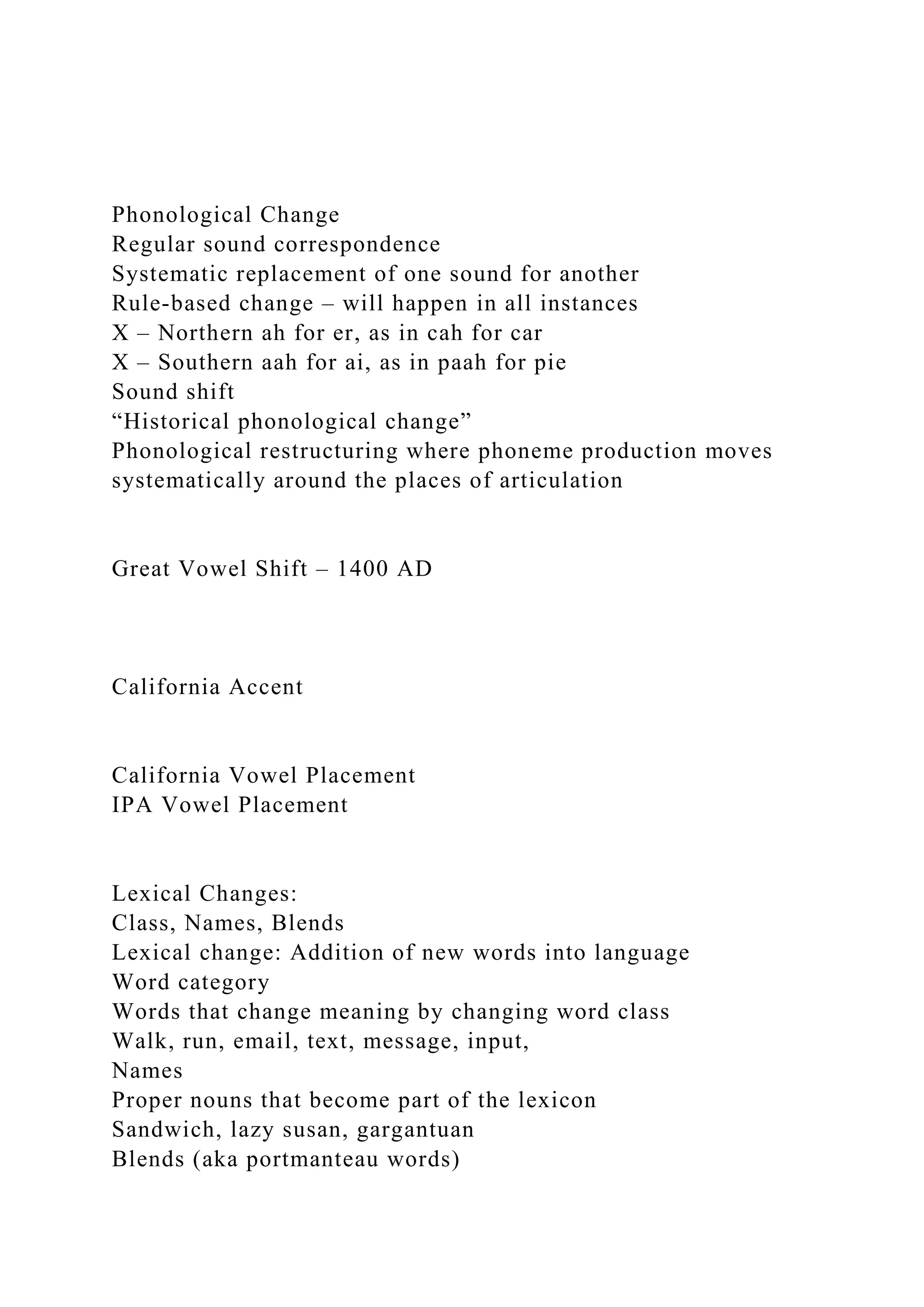
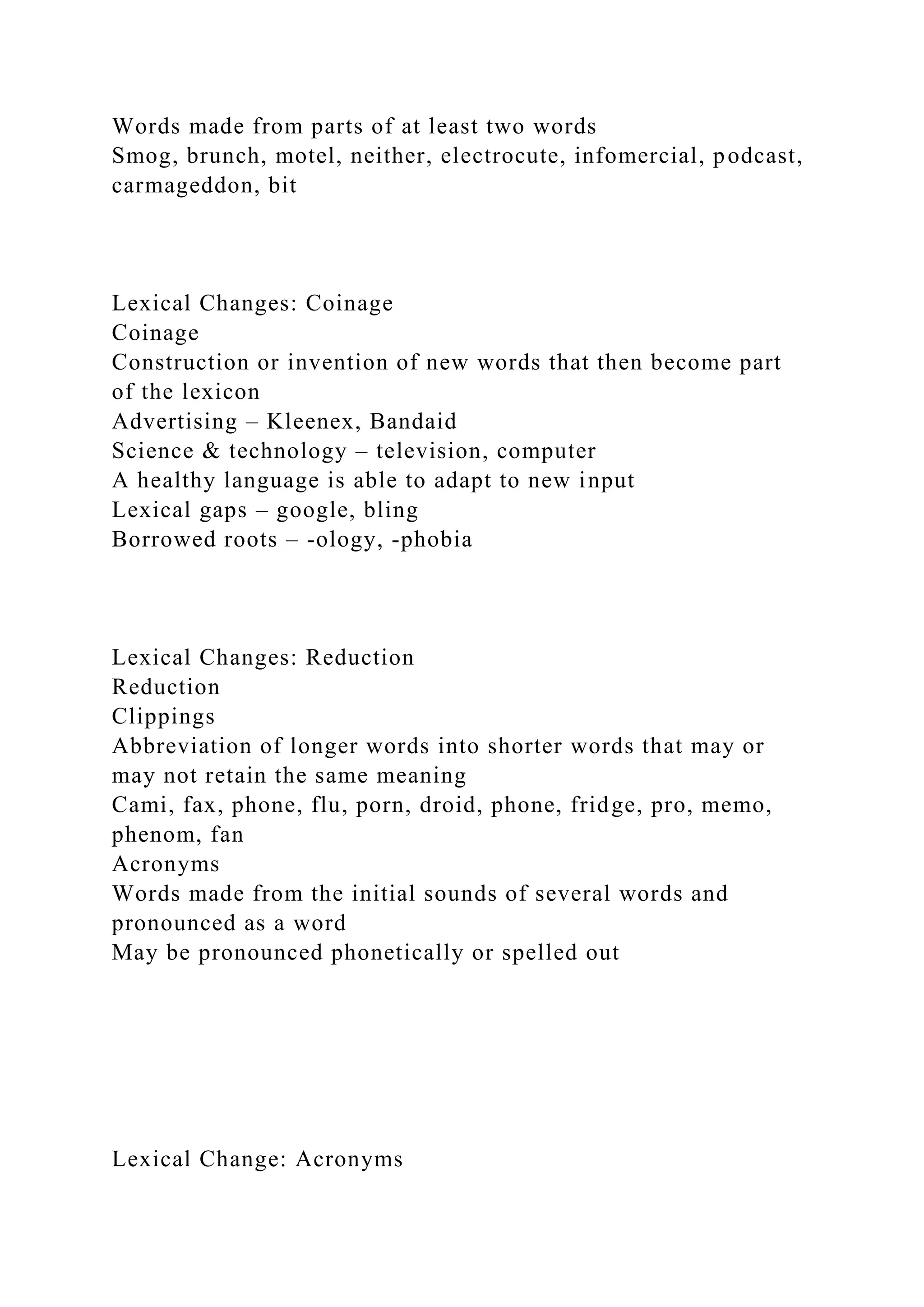


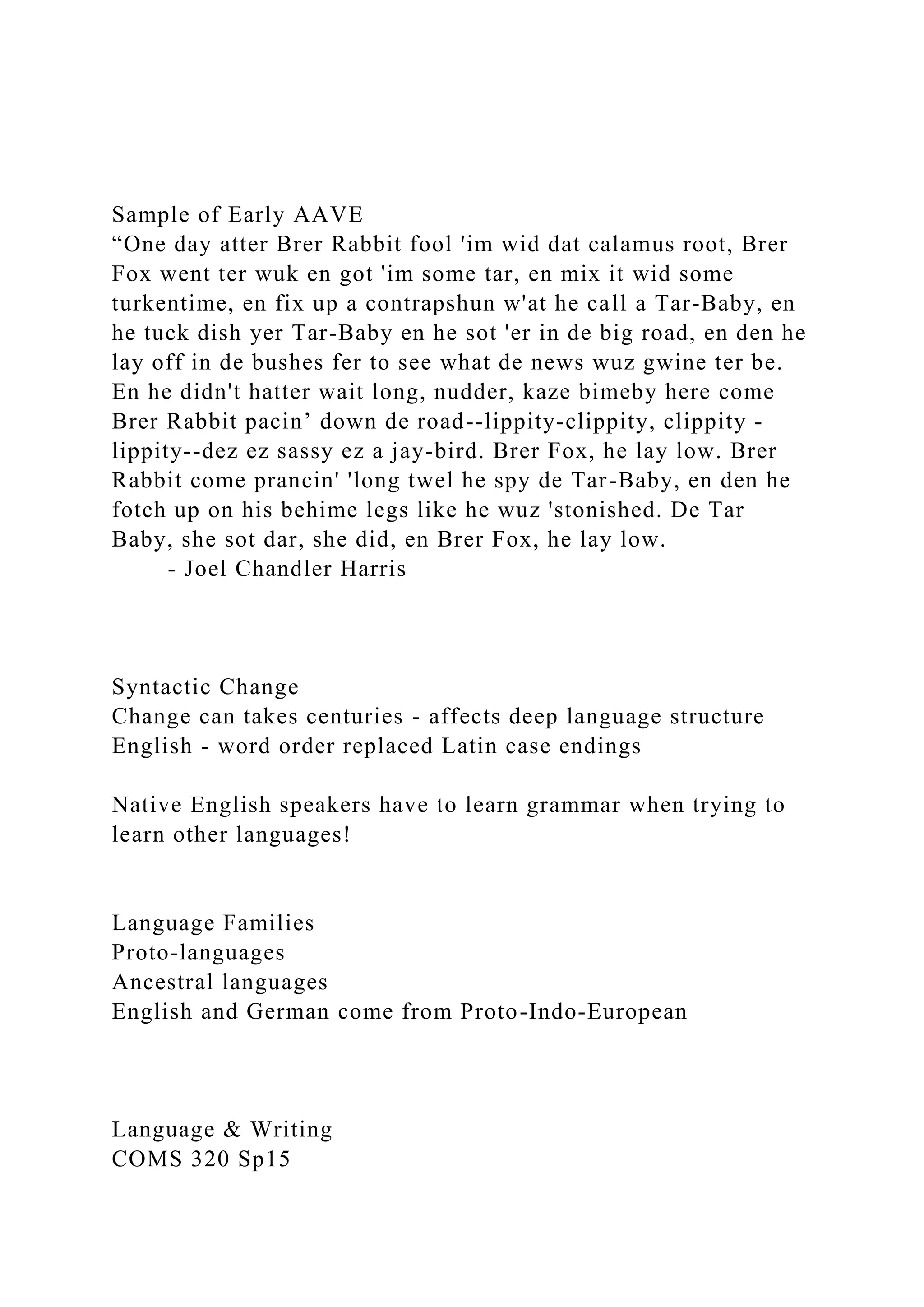


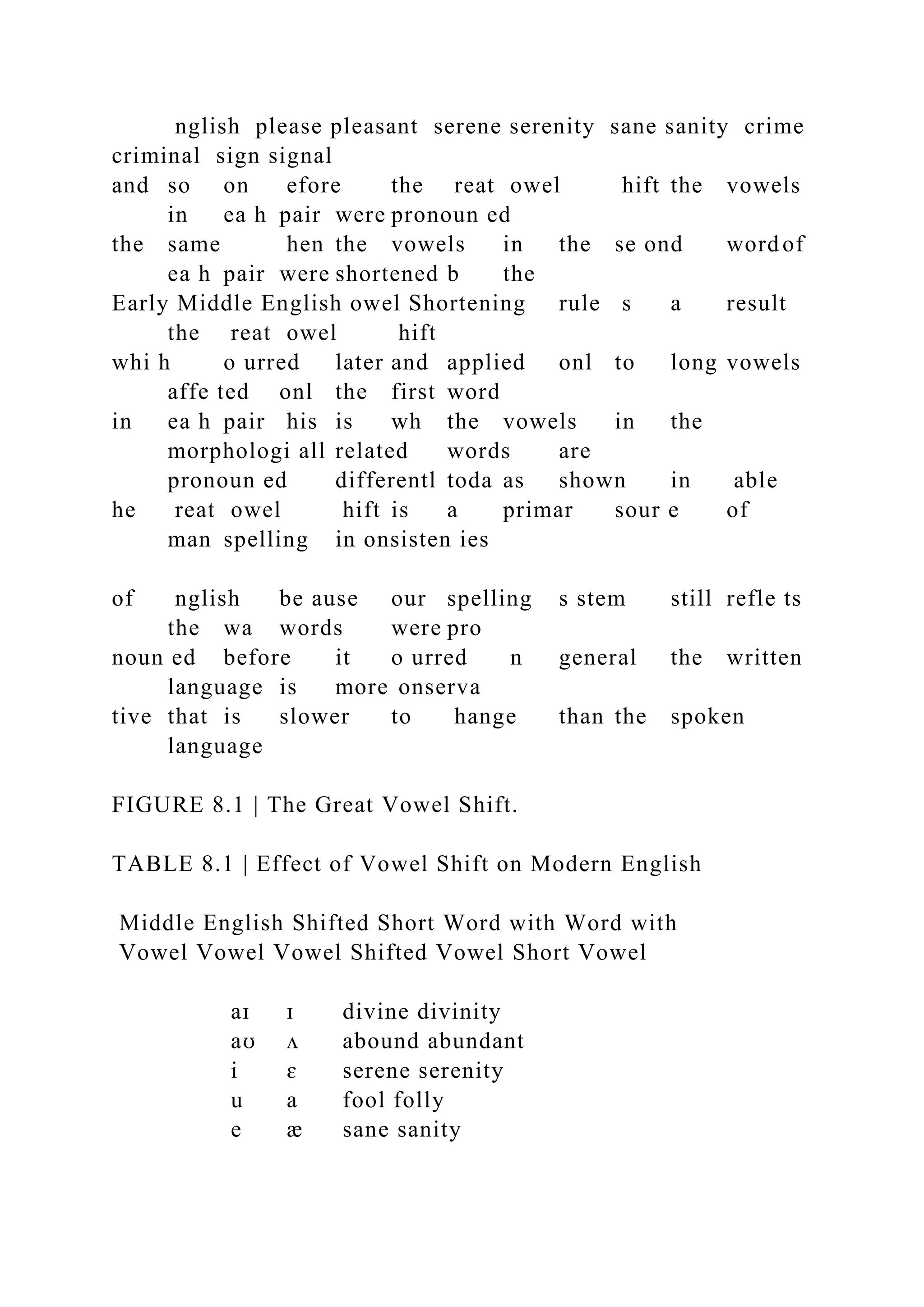
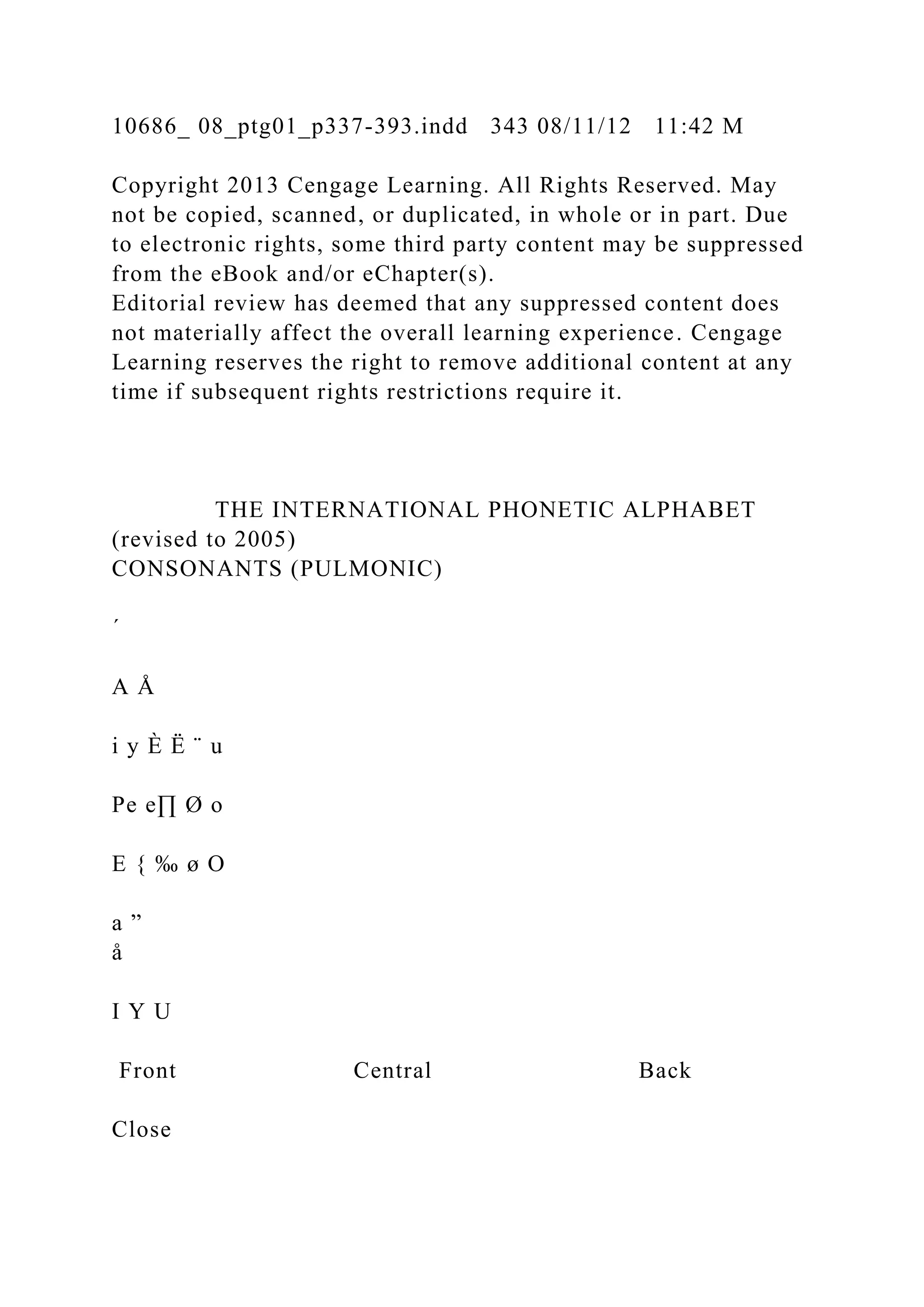
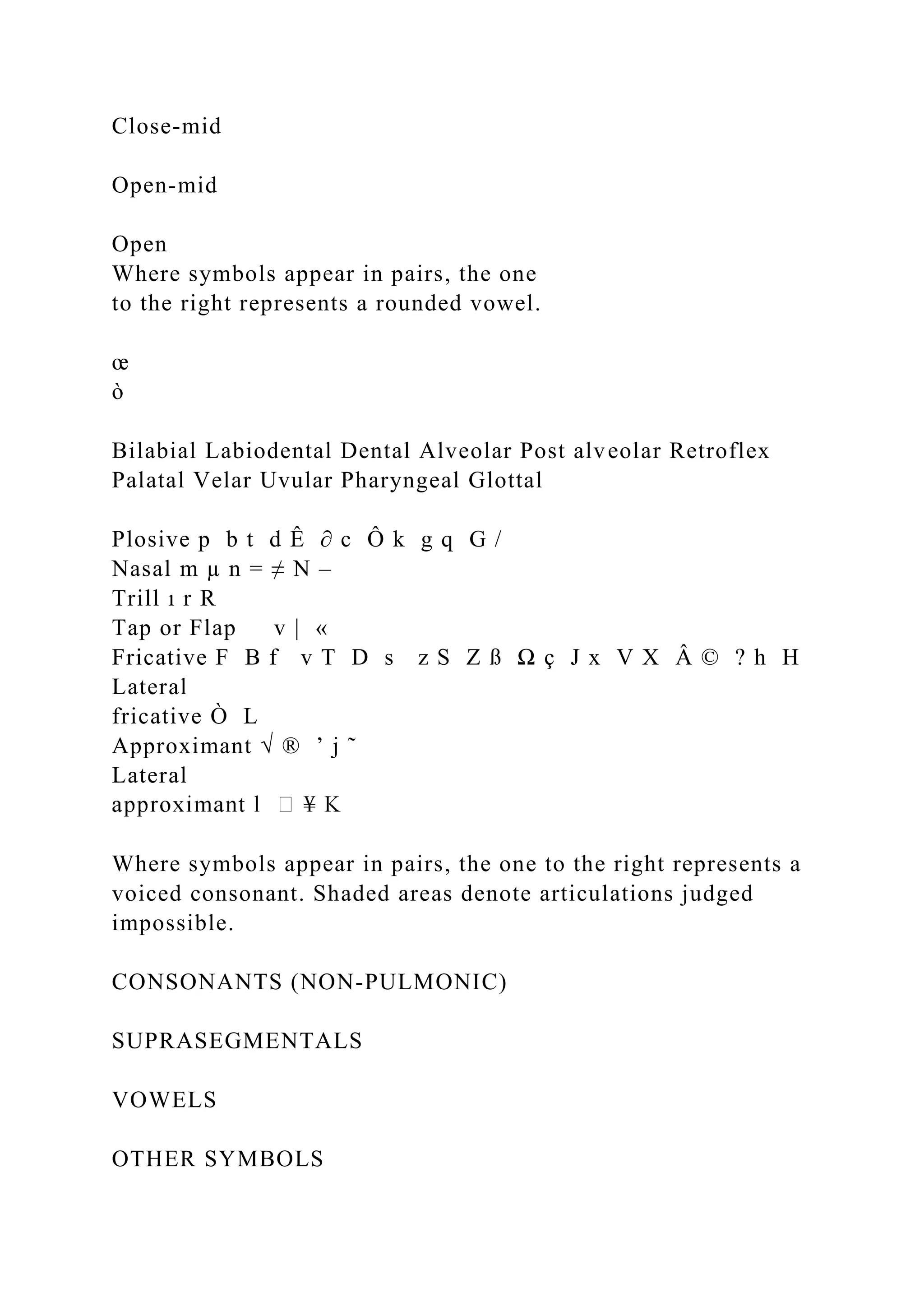
![Clicks Voiced implosives Ejectives
> Bilabial ∫ Bilabial ’ Examples:
˘ Dental Î Dental/alveolar p’ Bilabial
! (Post)alveolar ˙ Palatal t’ Dental/alveolar
¯ Palatoalveolar ƒ Velar k’ Velar
≤ Alveolar lateral Ï Uvular s’ Alveolar fricative
" Primary stress
Æ Secondary stress
ÆfoUn´"tIS´n
… Long e…
Ú Half-long eÚ
* Extra-short e*
˘ Minor (foot) group
≤ Major (intonation) group
. Syllable break ®i.œkt
≈ Linking (absence of a break)
TONES AND WORD ACCENTS
LEVEL CONTOUR
e _or â Extrahigh e
ˆ
or ä Rising
e! ê High e$ ë Falling
[email protected] î Mid e% ü Highrising
e~ ô Low efi ï Lowrising
e— û Extralow e& ñ$ Rising-falling
Õ Downstep ã Global rise](https://image.slidesharecdn.com/languageinsocietycoms320sp15ch7sectionslanguag-221031054956-e78fa3f4/75/Language-in-SocietyCOMS-320-Sp15Ch-7-SectionsLanguag-docx-22-2048.jpg)

